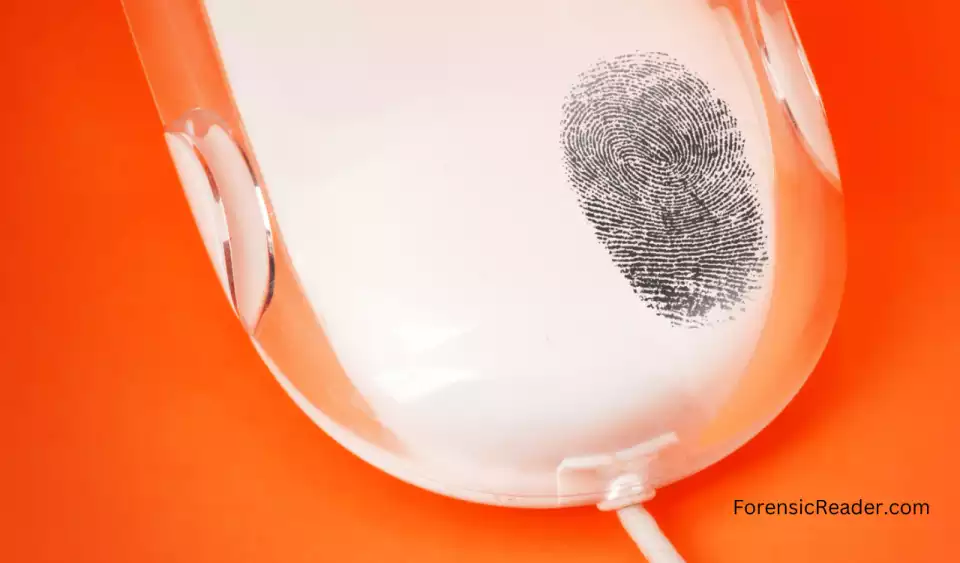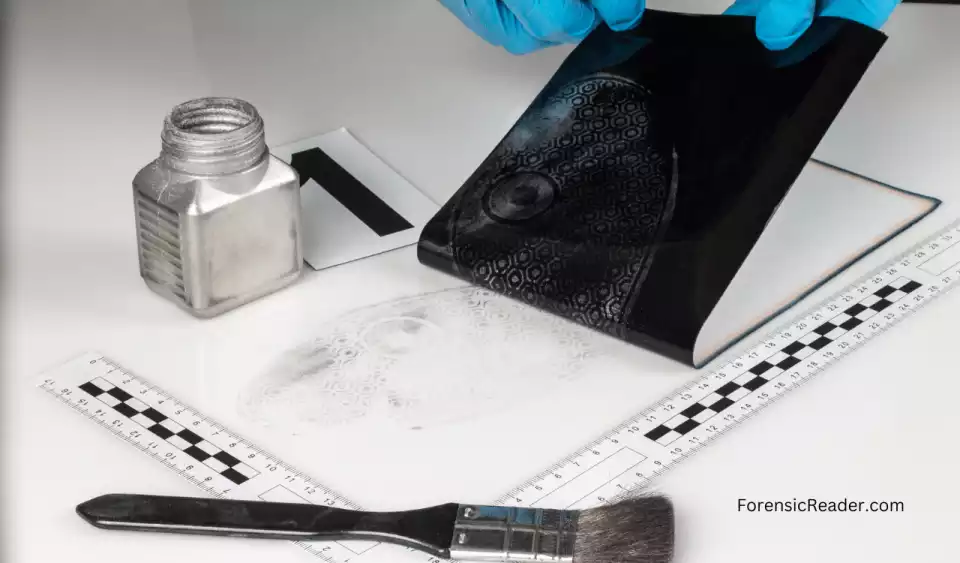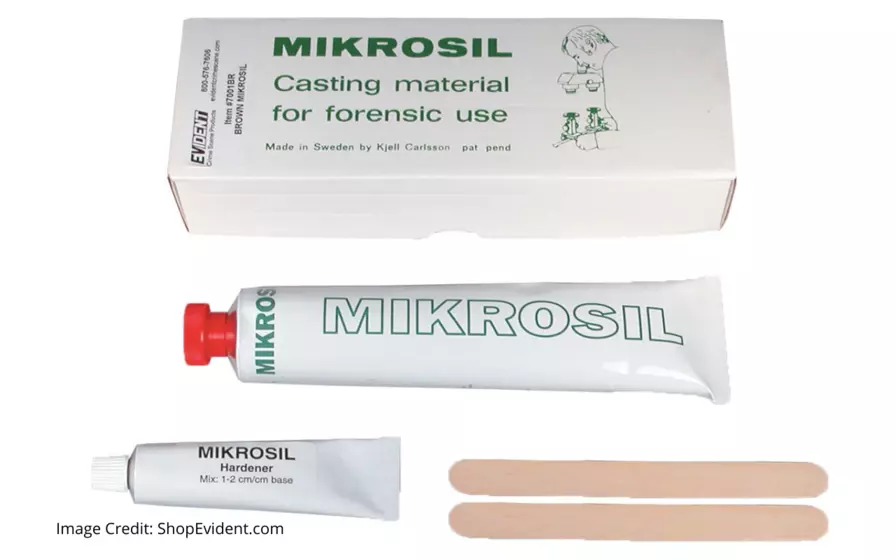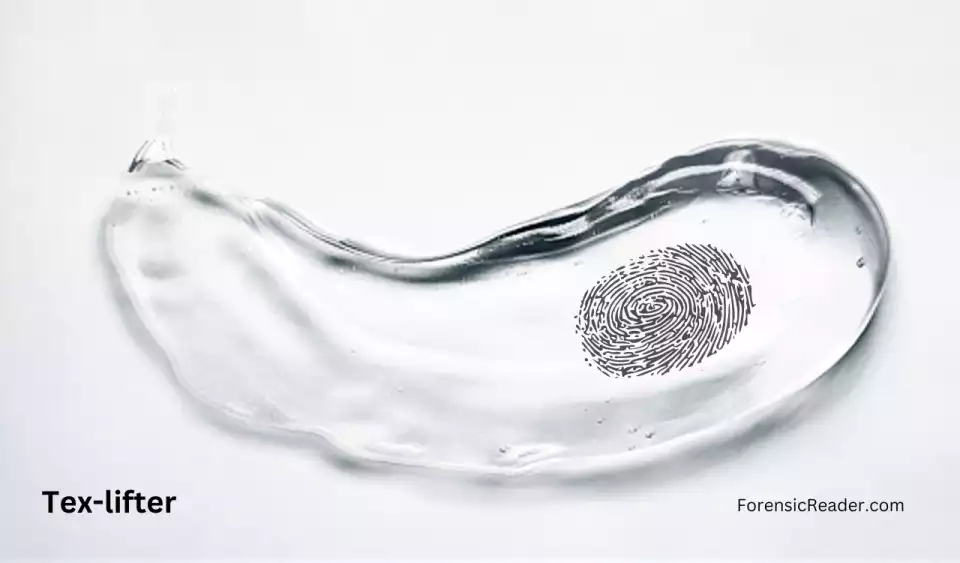Lifting fingerprints is a useful technique to preserve fingerprints or other developed marks on the surface. However, it is not recommended (and even possible) to always lift fingerprints. This post not only states the various ways to lift fingerprints but also the best lifting methods.
Following is the table stating the possible lifting methods based on the surfaces:
| Surface | Best Lifting Methods |
|---|---|
| Plastic | Tape and Hinge Lifters |
| Texture Plastic | Gelatine Lifters |
| Paper | Not Recommend Lifting (know more) |
| Glass | Tape, Hinge, Instant Lifters. |
| Clothes | Not Recommend Lifting |
| Leather | Gelatine, Mikrosil casting |
| Adhesive tapes | Not Recommended to lift |
| Floor | Tape, Hinge, Tex-Lifters. |
| Wood (Furniture) | Gelatine or Mikrosil casting |
| Tiles | Tape, Hinge, Tex-Lifters, Gelatine |
| Metal | Tape, Hinge, Instant Lifters, Gelatine |
| Skin | Kromekote technique |
| Cardboard | Not Recommended to lift |
1. Tape Lifters

The most common, economical, and easily available method for lifting developed fingerprints. It has one adhesive and a glossy part (that is pressed back to glossy to preserve from damage.)
- Used with: Prints developed by dusting powder techniques.
- Construction: One adhesive and one glassy part.
- Color: Black, White, and transparent
- Surfaces Preferred: flat and smooth surfaces but can be used on rough surfaces but the chances of getting full prints are less.
- Commercially Available:
- BVDA (Lifting Tapes): Clear tape[10] was successful in many cases, as elastic vinyl tape.
- Evident: Clear tape, Frosted(Non-reflective surface properties), Stretchable tape.
- Tetra SOC: Tape, Flex tape.
- Crime Scene Investigations (Tapes): Acetate sheets, lifting tapes.
- ISA adhesive tapes: Three-layer tape
2. Silicone/Rubber Lifters

Rubber lifters were first used for lifting footwear prints. They are available as a two-part system (like other modern casting materials): one is a silicone rubber polymerized base and the other is the catalyst.
They are mixed prior to lifting in a given proposition to onset hardening (polymerization). Currently, their successors (gel lifters) replaces rubber variant in nearly all possible forensic applications.
They are mainly used for lifting shoeprints and tire marks like silicone lifters. They all have the advantage of producing a positive image of a print.
- Used for: Tire, track, jewelry, and footwear prints.
- Construction: Two-part liquid silicone rubber system: Polymerized based and catalyst
- Color: Transparent, Translucent, and Opaque
- Commercially available: GTSIL-P and Silicone Lifters
3. Gel/Gelatine Lifters

Gel lifters are sometimes also termed rubber lifters but they are more modern and develop high-ridge details. They are commercially available in form of rubber or acetate-backed flexible gelatin.
Gelatine lifters mainly work as an alternative to the tape lifting technique. This technique is the least destructive considering the nature of various surfaces [Research Paper].
When talking about malleability, the gel lifters are between tape and silicone. With that much of advantages, these lifters have two major problems: (1) Ridge details smudges when lifting above 40°C, and (2) lifted impressions steadily degrade over time.
- Used with: Can use to lift all types of prints.
- Untreated fingerprints
- Footprint, shoeprint, and tire marks.
- Developed with magnetic powders, Cyanoacrylate, and SPR.
- Fingerprints in/on latex and vinyl gloves
- Old fingerprints (re-lifting or improving)
- Postmortem fingerprinting
- Construction: acetate-backed flexible gelatin.
- Color: Black, White, and transparent.
- Surfaces Preferred: all types of porous and non-porous smooth and texture surfaces.
- Commercially available:
- Black Gel lifters [BVDA]
- White Gel Lifters white [ShopEvident]
- Gel Lifter 13cm x 36cm [TetraSoc]
4. Kromekote Card Lift (Photographic Paper Technique)
The Kromekote technique is mainly used for lifting fingerprints from human skin using a special photographic card. It is also called the photographic paper lift technique.
Technique:
- The glossy photographic card is placed over the suspected area and pressed.
- Pressing should be firm enough so that it captures the ridge details on the skin surface.
- The card is removed and developed with regular black fingerprint powder.
- The resultant print is the mirror image of the fingerprint on the skin.
As per the study conducted by G.J.REICHARDT, et.al., and S.P.Singh, the Kromekote lifting method can develop prints up to 1.5 hrs old on the skin. Allman et.al. also made a comparison of Kromekote and other lifting techniques.
5. Mikrosil Cast Lifting

Mikrosil is a silicone-based casting material that is majorly used to cast tool marks but in some cases, it can also be used for fingerprint lifting (majorly with the textured surface). The malleability of the silicone conforms to the better texture and ridge details of the surface.
Some major advantages of using Mikrosil Silicone Casting:
- Greater tear strength
- Quick curing & settling time.
- Reproduce the surface with great detailing.
- Color: brown, black, white, and grey
- Construction: silicone base polymer and ester-doped color/hardener catalyst.
- Surface: mainly used for casting tool marks but can be used for lifting fingerprints over textured surfaces.
- Commercially available at:
Read More: Forensic Casting Materials: How to Choose One For Different Surfaces?
6. Tex-Lifters

Tex-lifters are in the form of liquid glues that flow over the developed prints and capture remarkably ridge details on drying. Though, the Tex lift liquid is blue in color but on drying they become transparent without hindering the contrast of developed fingerprints.
Once they dry, they can be lifted easily with other tape and gel lifters with appropriate backgrounds.
- Parichatr et.al. used the tex-lift technique for fingerprint detection on rough surfaces.
- Aurapa et. al. used the tex-lift technique for fingerprint lifting for oil-contaminated fingerprints.
7. Hinge-Style Lifters

Hinge-style lifters are one of the common methods of lifting small fingerprints or their group. They are smaller to cover the whole palm area of the body. First, the adhesive side of the prints captures the prints and is then pressed back onto a plastic back card.
- Construction: high-quality adhesive tape attached with a hinge to a plastic back card.
- Used with: Dusted powder prints
- Color: back and white plastic card back.
- Commercially available as:
- Quicklift Hinge lifters 12 Pack [ShopEvident]
- Sirchie Fingerprint Hinge Latent print Lifter [Adorma]
8. Instant lifters
Instant Tape Lifters are the most common and widely available adhesive lifters. They are in the form of rectangular sheet strips that can be cut as per needs.
The adhesive film has a special low-tack adhesive that doesn’t give a sticky residue on the surface.
However, to preserve prints, they require a non-porous surface on which they are swapped. You can find these lifters in almost all of the major stores such as BVDA, Shoeevidents, etc.

FR Author Group at ForensicReader is a team of Forensic experts and scholars having B.Sc, M.Sc, or Doctorate( Ph.D.) degrees in Forensic Science. We published on topics on fingerprints, questioned documents, forensic medicine, toxicology, physical evidence, and related case studies. Know More.
